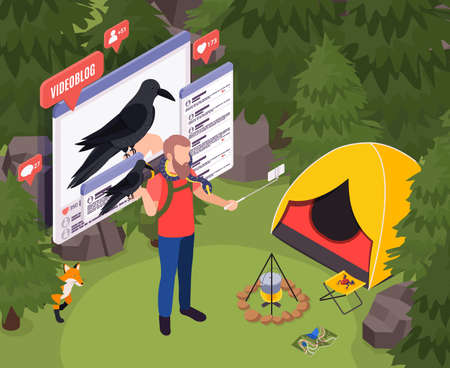Understanding Wild Camping in Scotland
Wild camping in Scotland carries a distinct meaning and tradition compared to other parts of the UK. At its core, wild camping refers to pitching your tent away from organised campsites and caravan parks, typically in remote or rural areas. This practice is deeply embedded in Scotland’s outdoor culture, thanks in large part to unique access rights enshrined in Scottish law. Unlike much of England and Wales, where camping outside designated sites often requires landowner permission, Scotland offers more freedom—within reason.
The key terminology to grasp includes the difference between “wild camping” and “informal camping.” In the Scottish context, wild camping usually means setting up a lightweight tent for just one or two nights and leaving no trace behind. This is not the same as roadside or car-based camping, which is generally discouraged and sometimes regulated differently. Additionally, Scottish wild camping culture expects campers to be entirely self-sufficient: carrying out all rubbish, avoiding damage to vegetation, and respecting both privacy and wildlife. Understanding these region-specific practices and terms is vital before planning any wild camping trip north of the border.
2. Legal Framework for Wild Camping
Scotland stands apart within the United Kingdom when it comes to wild camping, thanks to progressive legislation that recognises and protects public access to land. The most significant law is the Land Reform (Scotland) Act 2003, which gives everyone statutory rights of access to most land and inland water in Scotland, provided they do so responsibly. These rights are further explained and managed through the Scottish Outdoor Access Code, which sets out how campers, landowners, and other users should act to ensure mutual respect and minimal environmental impact.
In contrast, wild camping elsewhere in the UK—namely England, Wales, and Northern Ireland—is generally not permitted without the express permission of the landowner. There are some exceptions, such as parts of Dartmoor National Park in England, but these are limited compared to Scotland’s broad access rights.
| Region | Legal Status of Wild Camping | Relevant Legislation |
|---|---|---|
| Scotland | Permitted under statutory access rights (with conditions) | Land Reform (Scotland) Act 2003; Scottish Outdoor Access Code |
| England & Wales | Generally prohibited without landowner permission (some exceptions) | Countryside and Rights of Way Act 2000 (limited areas); local bylaws |
| Northern Ireland | Not permitted unless with landowner consent | No statutory right; relies on private agreements |
The distinction is important: while Scotland’s framework encourages responsible enjoyment of the outdoors, those venturing elsewhere in the UK must seek explicit consent or use designated campsites. Understanding these differences is crucial for anyone planning a wild camping trip across Britain, as failure to comply with local laws can result in fines or being asked to move on by landowners or authorities.

3. The Scottish Outdoor Access Code Explained
The Scottish Outdoor Access Code is a cornerstone document that underpins responsible enjoyment of Scotland’s diverse landscapes, especially for those keen on wild camping. Established under the Land Reform (Scotland) Act 2003, the Code outlines the rights and responsibilities of both land managers and the public. At its core, the Code empowers individuals to access most land and inland water in Scotland, provided they do so responsibly and respectfully.
Core Principles of the Code
The Scottish Outdoor Access Code is built around three fundamental principles: respect the interests of other people, care for the environment, and take responsibility for your own actions. These values are designed to ensure that everyone—campers, walkers, cyclists, and landowners—can coexist harmoniously. For wild campers, this means pitching tents discreetly, avoiding disturbance to wildlife or livestock, and keeping noise levels low to preserve the tranquillity of remote areas.
Guidance for Wild Campers
Wild camping is explicitly permitted under the Code as long as it is carried out in accordance with its guidelines. The emphasis is on small-scale, short-term camping away from roads and buildings. Campers are expected to leave no trace by removing all litter, refraining from lighting fires directly on the ground, and restoring sites to their original condition before departure. Furthermore, the Code advises campers to seek permission if intending to camp in enclosed fields or near dwellings, demonstrating courtesy towards local residents and land managers.
Balancing Freedom with Responsibility
While the right to roam is a celebrated aspect of Scottish culture, it comes with an expectation of stewardship. The Scottish Outdoor Access Code serves as a practical manual for striking this balance. By adhering to its principles, wild campers help protect natural habitats and ensure continued access for future generations. Ultimately, the Code is not just a set of rules but a reflection of mutual respect between people and place—a uniquely Scottish approach that encourages exploration while safeguarding precious environments.
4. Rights and Responsibilities
Scotland’s approach to wild camping is underpinned by the Land Reform (Scotland) Act 2003, which grants the public extensive rights of access to most land and inland water, provided that these rights are exercised responsibly. Understanding both the rights you hold as a wild camper and your responsibilities to others is essential for maintaining good relations with landowners, protecting wildlife, and ensuring the enjoyment of Scotland’s natural heritage for everyone.
Rights of Wild Campers
The Scottish Outdoor Access Code clarifies that individuals have the right to camp on most unenclosed land, such as moorland, forest, and many upland areas. This includes pitching a tent or bivvy for short periods in small groups. However, there are exceptions: some land near buildings, fields with crops or livestock, and areas under specific local restrictions (such as parts of Loch Lomond & The Trossachs National Park) may be excluded from these rights.
Key Responsibilities
| Aspect | Your Responsibility |
|---|---|
| Landowners | Respect privacy and livelihoods; avoid camping close to houses or farm buildings without permission; move on if requested. |
| Wildlife | Avoid disturbing animals, especially during sensitive times like breeding or nesting seasons; do not damage plants or habitats. |
| Other Visitors | Camp quietly and unobtrusively; leave no trace; keep noise levels down; avoid overcrowding popular spots. |
Responsible Behaviour in Practice
Acting responsibly means choosing a suitable pitch away from roads and buildings, staying only for two or three nights in one place, and leaving the site as you found it. Dispose of waste properly, use a stove instead of open fires where possible, and always follow any additional signage or guidance provided locally. Remember that your rights depend on how considerately you act—irresponsible behaviour can lead to further restrictions for all campers.
Summary Table: Rights vs. Responsibilities
| Rights Granted | Corresponding Responsibilities |
|---|---|
| Camp on most unenclosed land | Do not camp on enclosed or cultivated land without permission; respect exclusion zones. |
| Access for recreation | Minimise impact on the environment; avoid littering and pollution. |
By understanding and balancing your legal rights with these responsibilities, you contribute to a positive culture of access in Scotland’s outdoors—benefiting yourself, local communities, and future visitors alike.
5. Practical Guidelines for Compliance
Ensuring compliance with both legal requirements and the Scottish Outdoor Access Code is essential for anyone considering wild camping in Scotland. While the law grants significant freedoms, responsible behaviour safeguards these rights for everyone. The following actionable advice will help campers minimise their impact while remaining within the boundaries of the law and the Code.
Choose Your Spot Wisely
Select a location that is well away from buildings, roads, and cultivated land. Avoid camping in enclosed fields with crops or livestock, and respect the privacy of residents by keeping a reasonable distance from homes and gardens. In popular areas such as Loch Lomond & The Trossachs National Park, check for any local byelaws or restrictions before setting up camp.
Leave No Trace Principles
Follow strict leave no trace practices. Take all litter away with you, including food scraps, packaging, and toilet paper. Use a portable stove rather than making open fires, as fires can scar the landscape and pose wildfire risks. If you must use a fire for warmth or cooking, use existing fire sites where available, keep it small, and ensure it is fully extinguished before departure.
Sanitation and Waste Management
When nature calls, bury human waste at least 30 metres from water sources and paths, using a trowel to dig a small hole. Never wash directly in streams or lochs; instead, collect water in a container and wash at least 30 metres away from natural water bodies to avoid pollution.
Respect Wildlife and Livestock
Avoid disturbing wildlife, especially during sensitive breeding seasons. Keep dogs under close control at all times—ideally on a short lead—particularly near livestock or ground-nesting birds. Do not feed animals, as this can disrupt natural behaviours and create future problems.
Minimise Group Size and Stay Duration
Camp in small groups (ideally less than three tents) and limit your stay to two or three nights in any one location. Large groups or extended stays have greater environmental impacts and are more likely to cause concern among land managers or local communities.
Engage Positively With Others
If approached by landowners or other outdoor users, be polite and open about your intentions. Demonstrating knowledge of your responsibilities under the Access Code helps build trust and ensures that Scotland’s tradition of responsible access can continue for future generations.
6. Sensitive Areas and Local Exceptions
While Scotland’s Outdoor Access Code generally supports wild camping, there are key sensitive areas where additional legal restrictions apply. Understanding these local exceptions is crucial for responsible and lawful outdoor experiences. One of the most prominent examples is Loch Lomond & The Trossachs National Park. Here, specific byelaws have been introduced to address issues arising from high visitor numbers and environmental pressures. These byelaws restrict camping in certain zones during the busy season, typically between March and September.
Designated Camping Management Zones
Within Loch Lomond & The Trossachs, you’ll find designated Camping Management Zones where wild camping is only permitted with a pre-booked permit or at established campsites. This system was introduced to help protect fragile habitats, manage litter, and reduce anti-social behaviour. Ignoring these byelaws can result in fines or prosecution, so it’s essential to check the official National Park website before planning a trip.
Other Restricted Locations
Elsewhere in Scotland, local councils may introduce temporary or permanent byelaws prohibiting or restricting camping in particular spots. These can be put in place to safeguard nature reserves, drinking water catchments, or culturally significant sites. For example, parts of East Lothian’s coastline and some Highland lochs have occasional restrictions during peak seasons.
Respecting Local Communities
The Code always emphasises respect for local residents and land managers. Even outside formal byelaw areas, if you encounter signage indicating restricted access or requests not to camp, it’s best practice to comply. These notices are often put up due to recent environmental damage or ongoing conservation work.
Staying Informed
The legal landscape for wild camping in Scotland is dynamic—regulations can change based on environmental conditions or patterns of use. Always consult the Scottish Outdoor Access Code and relevant local authority websites for up-to-date information before your trip. Responsible wild camping means not only following national guidance but also being attentive to local rules and the needs of the landscapes and communities you visit.

